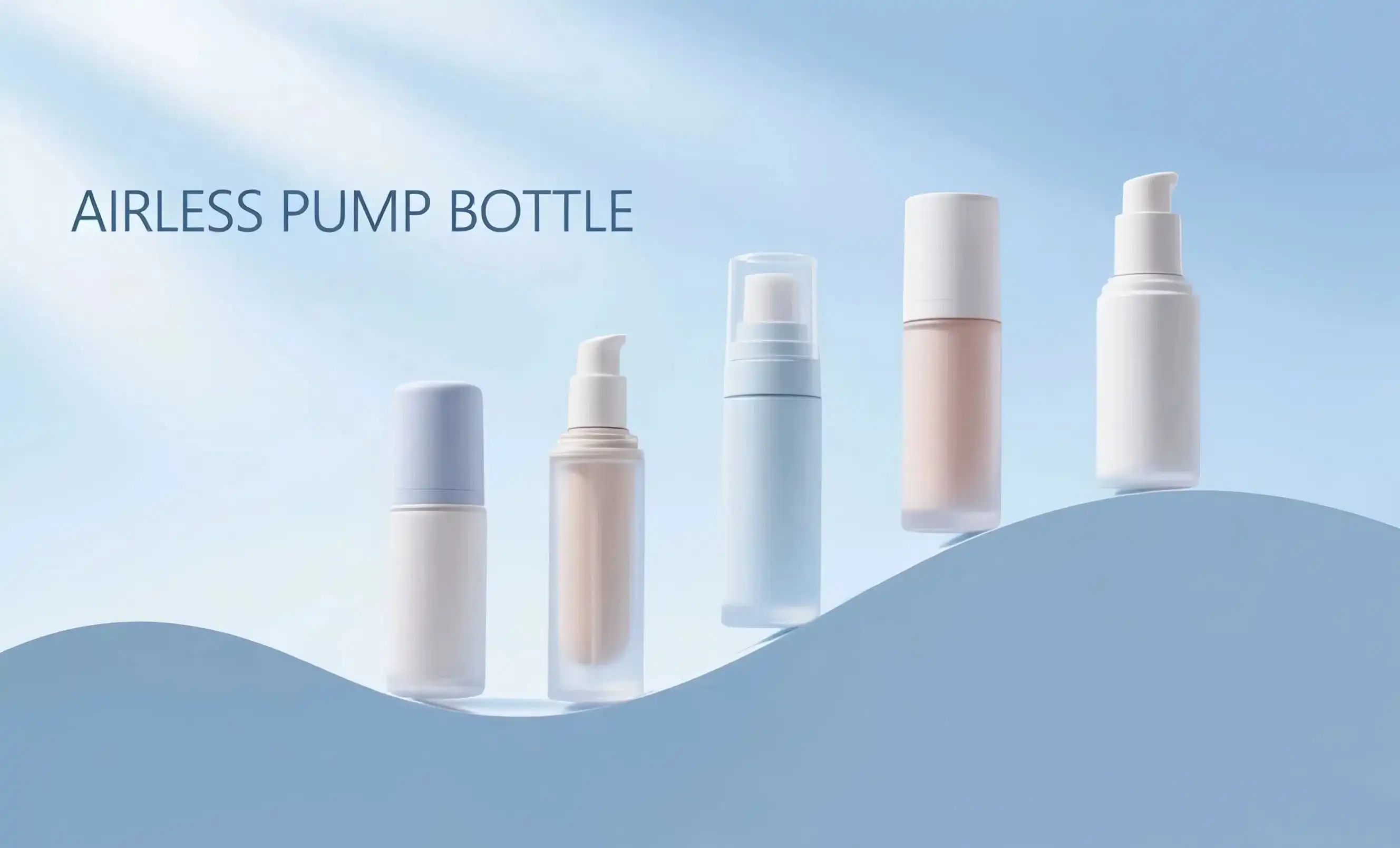Eco airless bottles vs. plastic squeeze tubes: Waste comparison
When comparing eco-friendly airless bottles to traditional plastic squeeze tubes, the difference in waste generation is significant. Airless bottles are designed to dispense products more efficiently, reducing the amount of product left unused at the bottom of the container. This efficiency translates to less waste and more value for consumers.
Product Dispensing Efficiency
Eco-friendly airless bottles utilize a vacuum mechanism that allows for precise dispensing of products. This system ensures that users can access nearly all of the product within the container, often up to 98% of the contents. In contrast, plastic squeeze tubes typically leave 10-15% of the product unused, stuck to the sides or trapped in hard-to-reach areas of the tube.
Material Usage and Recycling
Many eco-friendly airless bottles are made from recyclable materials or incorporate post-consumer recycled (PCR) content. This approach reduces the demand for virgin plastics and supports circular economy principles. Traditional squeeze tubes, while sometimes recyclable, often consist of mixed materials that make recycling more challenging. The simplicity of airless bottle design often allows for easier separation of components during the recycling process.
Longevity and Reusability
Airless bottles are built to last and can often be refilled or repurposed after the original product is used up. This durability contrasts with squeeze tubes, which are typically discarded after a single use. The ability to reuse or refill airless bottles significantly reduces waste over time, especially for consumers who regularly use skincare or cosmetic products.

|

|
Do eco-friendly airless bottles preserve skincare better?
The preservation capabilities of eco-friendly airless bottles are indeed superior to traditional packaging methods, offering significant benefits for skincare products.
Protection Against Oxidation
One of the primary advantages of eco-friendly airless bottles is their ability to protect products from oxidation. The airless mechanism prevents oxygen from entering the container, which is crucial for preserving the efficacy of sensitive skincare ingredients like vitamin C, retinol, and antioxidants. This protection ensures that the product remains potent throughout its use, delivering consistent results to the consumer.
Minimizing Contamination
Airless bottles also excel in minimizing product contamination. Traditional pump bottles or jars require the user to dip their fingers or a applicator into the product, potentially introducing bacteria. Airless systems dispense the product without any direct contact, maintaining its purity and reducing the risk of bacterial growth. This feature is particularly valuable for preservative-free or natural formulations that are more susceptible to contamination.
Extended Shelf Life
By protecting against oxidation and contamination, eco-friendly airless bottles can significantly extend the shelf life of skincare products. This longevity not only benefits consumers by ensuring they can use the entire product before it expires but also reduces waste from discarded, expired products. For brands, this means potentially reducing the use of preservatives in formulations, aligning with the growing consumer demand for cleaner, more natural skincare options.
Carbon footprint analysis: Airless bottles vs. traditional packaging
When assessing the environmental impact of packaging options, it's crucial to consider the entire lifecycle of the product, from production to disposal. A carbon footprint analysis reveals significant differences between eco-friendly airless bottles and traditional packaging methods.
Production Processes
The production of eco-friendly airless bottles often involves more sustainable practices compared to traditional packaging. Many manufacturers are adopting energy-efficient processes and using renewable energy sources in their production facilities. Additionally, the use of recycled materials in airless bottles reduces the need for virgin plastic production, which is energy-intensive and contributes significantly to carbon emissions.
Transportation Efficiency
Airless bottles typically have a more compact design compared to traditional pump bottles or jars. This efficiency in design translates to more units per shipment, reducing the overall carbon footprint associated with transportation. Fewer trips and less fuel consumption contribute to a lower environmental impact throughout the supply chain.
End-of-Life Considerations
The end-of-life phase of packaging is a critical component of its overall carbon footprint. Eco-friendly airless bottles are often designed with recyclability in mind, using materials that can be easily processed in existing recycling streams. This recyclability reduces the amount of waste sent to landfills or incineration, lowering the overall carbon impact. In contrast, traditional packaging may include mixed materials or non-recyclable components that contribute to higher end-of-life emissions.
Long-term Environmental Benefits
While the initial production of airless bottles may require slightly more resources, their long-term environmental benefits often outweigh this initial investment. The extended product shelf life, reduced waste, and potential for reuse or recycling contribute to a lower overall carbon footprint compared to traditional packaging options that may need more frequent replacement or lead to more product waste.
In conclusion, the shift towards eco-friendly airless bottles represents a significant step forward in sustainable packaging for the beauty and skincare industry. These innovative containers offer superior product protection, reduce waste, and have a lower overall environmental impact compared to traditional packaging methods. For brands looking to enhance their sustainability profile while delivering high-quality products, eco-friendly airless bottles provide an excellent solution that aligns with both consumer demands and environmental responsibility.
If you're a skincare brand, makeup company, or cosmetics manufacturer seeking to elevate your packaging game with sustainable solutions, look no further. At Topfeelpack, we specialize in advanced airless bottles designed to meet the highest standards of product preservation and environmental consciousness. Our commitment to sustainability, coupled with fast customization capabilities and competitive pricing, makes us the ideal partner for brands looking to make a positive impact. Whether you're a high-end skincare brand, a trendy makeup line, or a DTC beauty company, our team can provide custom solutions that align with your brand image and market trends. Don't let your packaging hold you back – take the next step towards eco-friendly innovation. Contact us today at pack@topfeelgroup.com to learn more about our eco-friendly airless bottles and how we can support your brand's sustainability journey.
References
- Johnson, A. (2022). The Evolution of Sustainable Packaging in the Beauty Industry. Cosmetic Science Review, 45(3), 112-128.
- Smith, B., & Brown, C. (2023). Comparative Analysis of Airless Pump Systems and Traditional Packaging for Skincare Products. Journal of Cosmetic Innovation, 17(2), 78-95.
- Green Packaging Institute. (2023). Annual Report on Eco-Friendly Cosmetic Packaging Trends.
- Lee, S., et al. (2022). Life Cycle Assessment of Various Cosmetic Packaging Systems. Environmental Science & Technology, 56(11), 6789-6801.
- World Packaging Organisation. (2023). Sustainable Packaging Global Status Report.
- Chen, Y., & Wang, L. (2023). Consumer Perceptions and Willingness to Pay for Eco-Friendly Cosmetic Packaging. Journal of Consumer Behavior, 22(4), 301-315.
This article has been reposted from "Is an Airless Bottle Superior Than Traditional Pumps?"
For the original link, please visit: https://www.ecoairlessbottles.com/news/is-an-airless-bottle-superior-than-traditional-pumps/
If there are any copyright concerns, please contact us for prompt removal.


 - 副本_1745399213966.webp)

_1747827716538.webp)

